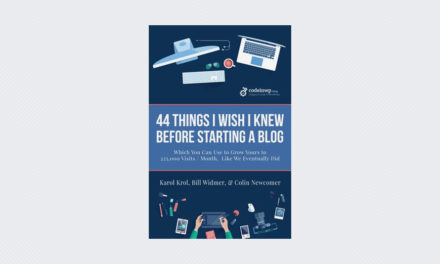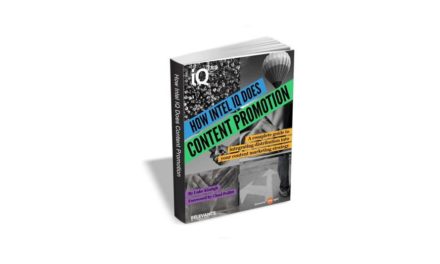
Top 4 Platforms To Start A Written Content Based Business / Blog With Pros And Cons

– Zoe Sugg
In this post, we’ve listed down 4 top platforms to start a written content based business or blog, together with their pros and cons. As most of today’s business is very content dependent, regardless of medium, a strong foundation to hold and present your content is extremely important.
Top 4 Platforms To Start A Written Content Based Business / Blog With Pros And Cons
MEDIUM
Free and Paid ($5/month or $50/year) options available.
PROS
- Easier traffic as Medium has visibility for your content through its algorithm.
- Free to use and enroll into their partner program, even if you aren’t a premium member.
- Very easy to setup your profile and start writing in their in built editor, no domain buying, no hosting.
CONS
- It’s a platform and it’s not your own real estate.
- No opportunities for expanding revenue streams besides directing people to your newsletter and using that audience.
- You can’t control the look and feel of your profile besides a basic description and a featured post.
- You cant get deep insights or integrate analytics, you need to use Mediums own version, which is OK.
WORDPRESS
WordPress.org is free but requires hosting and domain name. WordPress.com provides free hosting + subdomain but has Premium plans as well.
But it’s got it’s drawbacks as well, with all those extensions, bells and whistles, it’s gotten slow. It’s harder to keep it simple.
PROS
- It’s easy to learn with countless resources.
- It’s usually a one click install on most platforms as it’s so widely used.
- It’s open source, so free to use in a commercial capacity.
- It’s scalable and has diverse options for revenue streams.
- No doubt one of the best out-of-box SEO setups out there.
- Native WordPress GUI has a drap and drop design feature which allows you to design your layouts effortlessly. Various builders are also available today such as DIVI.
- Although speed is a well-known issue, there are good caching plugins (WpRocket) to optimize your site and Content Delivery Networks (CDNs) (StackPath) to help in improving the overall loading speed.
CONS
- Slow – It’s got too much fat as a platform with the average user loading up on bulky extensions that do a simple thing at the expense of 200ms load time.
- Because it’s your own real-estate, there’s costs like domain name and hosting (yes standard, but 2 of the other platforms don’t have that).
- You’re not part of an established platform where users will visit every day (YouTube, Facebook, Medium), you need to work harder on driving traffic.
SUBSTACK
Free forever. Once you start charging for subscriptions, Substack will take 10%
Your content is delivered as an email newsletter, so every new thing you publish, you send. It’s free to use, but they bank on the fact that you will eventually make premium emails that are only for subscribers (taking a portion of these earnings) – It also publishes them to the site. So this platform is more about finding your true fans, than going for volume.
PROS
- It’s got its own editor, is free and easy to use (like Medium).
- It’s your own list of portable followers (unlike Medium).
- You can link out to anywhere and promote practically anything without consequences.
- You can add analytics software for deeper stats per blog post/email.
- Your blog is your email list, so you don’t need to worry about promoting it constantly.
- You have infrastructure to monetize via subscriptions like Medium, but you get a bigger piece of the (smaller) pie when someone subscribes.
CONS
- The visibility of your content isn’t increased for being on the platform, except if you’re in the Top 50 for a particular post — so less reach.
- You still can’t monetize through affiliate programs or ads, but you can link out as mentioned prior.
- In the fashion of strength in numbers, it’s harder to convert someone for only your content than it is for converting someone for many author’s content and taking a smaller piece of a larger pie.
GHOST
Get started for free. 14-day free trial available.
- Basic ($29/month – billed annually)
- Standard ($79/month – billed annually)
- Business ($199/month billed annually)
PROS
- It’s built with Node.js — massive pool of developers to help with scale.
- Super lightweight and doesn’t have the bulk of WordPress.
- Has all the built-in features of Medium that matter and more — Unsplash integration, subscription functionality, Zapier, AMP, Disqus comments, analytics, etc.
- It’s your own real-estate so you can add multiple revenue channels.
- Fully customizable, if you have the right knowledge and tools.
CONS
- There are very few 1-click installs. Even DigitalOcean’s one isn’t hassle-free, and they’re the ones that manage Ghost(Pros) infrastructure.
- You need to have a trivial knowledge (at least) of contemporary JS, SSH and how server architecture works for your own install.
- There aren’t unlimited themes or extensions, as there seemingly are for WordPress.
- Fixing trivial problems like making your external links open new tabs requires knowledge that you otherwise wouldn’t need on WordPress.
- To avoid these problems, you’d need to pay a developer, learn to develop or use the pro version — each has problems when you look to scale the site.
Free Ebooks
A site that brings both authors and readers into the world of free legal ebooks.
Bookworm Videos
Watch videos about books, reading and writing. Expect weird, amazing, never known before facts and many more.













